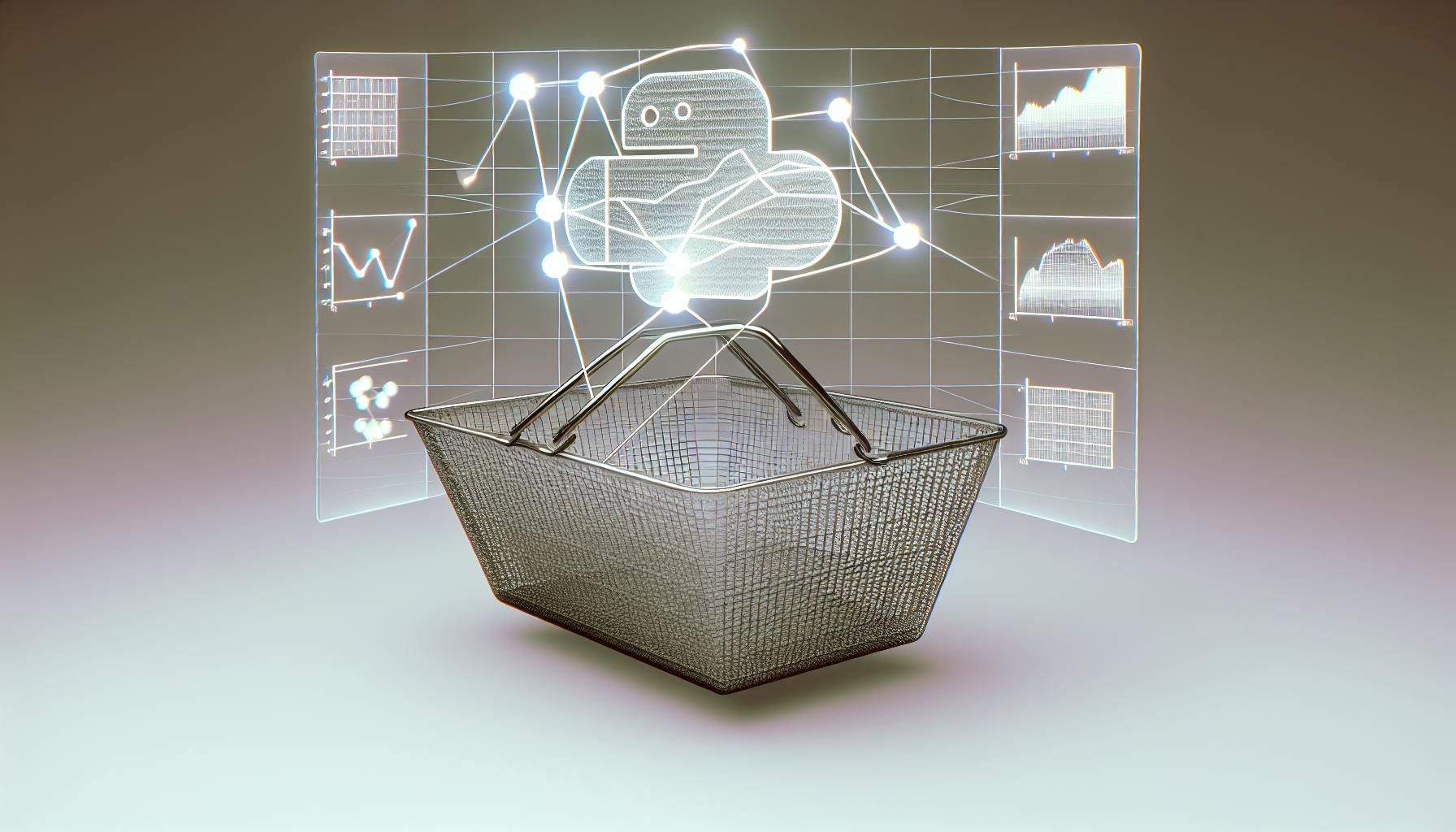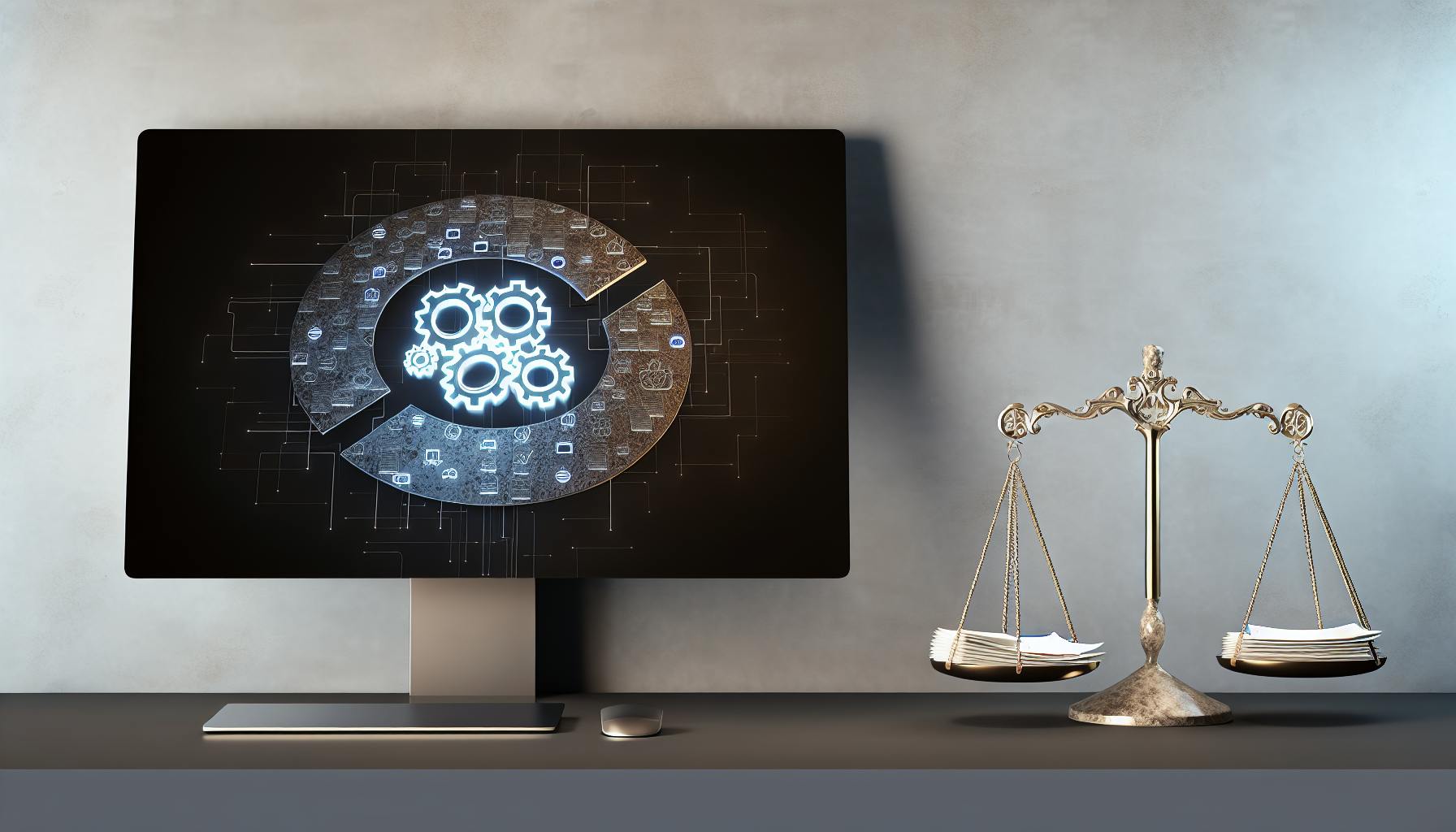Hospitality professionals likely agree that understanding the customer experience is crucial for success.
This guide promises a practical way to leverage Python to analyze hospitality customer data and experiences like never before.
Read on to learn step-by-step how to gather relevant data, build an interactive dashboard to monitor metrics, implement machine learning for advanced analysis, and prioritize improvements to transform the guest experience.
Crafting a Python-Based Customer Experience Analysis Tool for Hospitality
Customer experience is critical in the hospitality industry. Providing excellent service and meeting customer expectations directly impacts metrics like repeat business, referrals, and online reviews. Using data analysis to understand the customer journey can help hospitality managers optimize experiences.
Python is an ideal programming language for customer experience analysis due to its extensive data analysis libraries. By leveraging Python, hospitality businesses can gain actionable insights from customer data to improve satisfaction.
The Importance of Customer Experience in Hospitality Management
In the hospitality industry, customer experience is a key differentiator. With so many options for accommodations, food and beverage, and leisure activities, customers have high expectations for service. A poor experience can quickly send them to a competitor.
Key metrics impacted by customer experience:
-
Repeat business - According to studies, over 80% of guests say a positive experience makes them likely to return. Understanding pain points through data can help remedy issues.
-
Referrals - Similar to repeat business, a positive experience drives recommendations to friends and family. Referrals are more valuable than other marketing channels.
-
Online reviews - Reviews significantly sway booking decisions and search rankings. Positive experiences lead to better reviews. Analyzing reviews helps uncover weaknesses.
By focusing on customer experience, hospitality managers can increase lifetime value. The long-term gains outweigh short-term costs of service improvements.
Python's Role in Hospitality Data Analysis
Python is the leading language for data analysis due to its extensive libraries focused on statistics, machine learning, and data visualization. These tools can help hospitality managers analyze customer data.
Benefits of using Python include:
-
Open source - Python and its libraries are free to use without restrictive licensing. This reduces barriers for adoption.
-
Flexibility - Python integrates with SQL databases and NoSQL data lakes used in hospitality technology stacks.
-
Scalability - Python scales to large datasets produced by hospitality systems like property management software. This enables complex analysis.
-
Visualizations - Python visualization libraries like Matplotlib provide impactful graphs and charts to easily interpret customer data.
By leveraging Python for customer experience analysis, hospitality managers can identify pain points and optimize experiences. This data-driven approach is key to improving guest satisfaction.
How is Python used in the hospitality industry?
Python is gaining popularity in the hospitality industry due to its versatility and ease of use for data analysis. Here are some of the key ways Python is being used:
Customer Experience Analysis
Python can help hospitality businesses understand customer behavior and preferences. By analyzing customer data with Python libraries like Pandas, businesses can identify trends to improve experiences. Some examples include:
- Analyzing customer reviews to identify common complaints or areas of praise
- Creating customer profiles based on past purchases and behaviors to offer personalized promotions
- Tracking customer journeys across channels to understand pain points
Operational Analytics
Python enables hospitality managers to optimize day-to-day operations. Examples include:
- Forecasting demand to schedule staff and stock supplies
- Identifying menu items with the highest profit margins to optimize offerings
- Analyzing employee productivity metrics to improve workflows
Dynamic Pricing Models
Python machine learning libraries like Scikit-Learn allow businesses to take a data-driven approach to pricing based on demand forecasts, competitor pricing, and other factors. This can maximize revenue.
As data continues to grow in importance, Python provides a scalable way for hospitality businesses to harness insights. Its versatility makes it a valuable addition to any analytics toolkit.
How data analytics serves as a predictive tool for hospitality operations?
Data analytics can provide invaluable insights to help hospitality businesses predict and plan for future demand. Here are some of the key ways it serves as a predictive tool:
Forecasting occupancy and revenue
By analyzing historical booking data, hospitality businesses can identify seasonal trends, events, and other factors that impact occupancy rates and revenue. Statistical models can then forecast expected occupancy and revenue for future dates. This helps with capacity planning, staffing levels, pricing strategies, and more.
Optimizing staff levels
Examining past booking and on-property data can reveal peak periods of guest volume and transactions. Businesses can align staff schedules and levels to meet projected demand, improving customer service during busy times.
Personalizing marketing
Customer data analytics helps segment guests and determine trends in their booking behaviors, spend, amenities used, etc. Hospitality marketers can then craft targeted promotions to specific guest profiles, increasing campaign effectiveness.
Monitoring market performance
Competitive benchmarking against industry performance metrics helps hospitality firms gauge their market strength. Metrics like RevPAR (revenue per available room) can be tracked over time to measure property/company growth against the overall market.
Enhancing customer experiences
Sentiment analysis on guest feedback helps identify pain points. Businesses can then develop service initiatives to address common complaints and improve experiences. Analytics transforms customer insights into action.
So in summary, hospitality analytics is crucial for planning, forecasting, optimizing operations, marketing, and enhancing guest experiences – all vital elements for success.
What are the system requirements for hotel management system in Python?
To develop a hotel management system in Python, you will need to have the following minimum system requirements:
Processors
- Intel Atom® processor
- Intel® CoreTM i3 processor or equivalent
Python can run on multiple platforms, so you have flexibility in choosing your processor. However, an Intel Atom® or CoreTM i3 processor provides sufficient power for a basic hotel management system.
Disk Space
- Minimum 1 GB
The actual disk space required will depend on the size of your hotel data and additional modules used. But most basic hotel management systems will run with 1 GB disk space.
Operating Systems
- Windows 7 or later
- macOS
- Ubuntu
Python runs on Windows, macOS, Linux and Unix systems. Some common operating systems are Windows, macOS and Ubuntu. These operating systems provide a stable base for developing and running Python applications.
Python Versions
- Python 2.7 or Python 3
Python hotel management system can be built using either Python 2.7 or Python 3. Both versions have extensive libraries to develop desktop applications. Python 3 is recommended for new projects, but Python 2.7 may be preferred for legacy systems.
So in summary, a Core i3 system with 1 GB disk space, using Windows/macOS/Ubuntu and Python 2.7/3 will comfortably run a hotel management system for most small to mid-sized hotels. Specific hardware requirements may vary based on the size and complexity of your system.
What is predictive analytics for hotels?
Predictive analytics refers to statistical and machine learning techniques that analyze current and historical data to make predictions about the future. For the hospitality industry, predictive analytics can be a powerful tool to optimize operations and increase revenue.
Here are some of the key ways that hotels can use predictive analytics:
Dynamic pricing
Hotels can analyze historical booking data, competitor pricing, events calendars, and other factors to forecast demand. Based on the demand predictions, hotels can dynamically adjust room rates to find the optimal price. This balances occupancy and revenue, preventing underpricing during peak times or overpricing during low demand.
Guest personalization
By analyzing guest data and booking history, hotels can predict guest preferences and needs. Hotels can then tailor offerings for returning guests, including room location, amenities, special packages, and promotions. Personalized marketing through predictive analytics leads to higher guest satisfaction.
Staff scheduling optimization
Predictive analytics software can forecast guest volume and analyze past trends to create optimal staff schedules. This ensures the right level of staffing for check-ins/check-outs, housekeeping, and other guest services. Optimized schedules improve the guest experience through shorter wait times while reducing unnecessary staff costs.
Equipment failure prediction
By applying predictive maintenance analytics, hotels can use data from sensors and equipment logs to forecast failures before they occur. This allows for proactive maintenance and repairs, minimizing equipment downtime and disruption to hotel operations.
In summary, predictive analytics helps hotels operate more intelligently. By understanding future needs and trends, hotels can deliver personalized guest experiences while optimizing staff levels, pricing, and operations. This leads to maximized revenue and profitability.
sbb-itb-ceaa4ed
Gathering Hospitality Data for Customer Experience Analysis
Collecting relevant data is crucial for gaining insights into customer experience in the hospitality industry. This can be achieved through various methods such as:
Designing and Distributing Customer Satisfaction Surveys
- Create targeted surveys asking about different aspects of the customer experience (check-in, room, amenities, staff interactions etc.)
- Distribute via email and have paper surveys available before check-out
- Offer incentives to increase response rates
- Ask specific questions that elicit actionable feedback
Harnessing Online Reviews for Insightful Customer Experience Analysis
- Aggregate reviews from sites like TripAdvisor, Booking.com etc.
- Use NLP techniques to identify common topics and themes
- Track sentiment over time to spot trends and issues
Leveraging Customer Service Logs for Enhanced Hospitality Management
- Log all customer service interactions in a central database
- Identify most common complaints and requests
- Track resolution times to optimize processes
Integrating Transactional Data for a Comprehensive View
- Incorporate sales data, foot traffic etc. with survey and review data
- Identify relationships between spending and satisfaction
- Spot issues with amenities or offerings that may impact customer experience
Thoughtfully collecting data from multiple sources provides a holistic view of the customer journey. This enables data-driven decision making to continuously refine and improve hospitality services.
Developing a Python Tkinter Dashboard for Real-Time Customer Experience Monitoring
Creating an interactive dashboard with Python Tkinter can provide hospitality businesses valuable insights into customer experience metrics in real-time. This allows managers to monitor service quality and quickly address any issues.
Setting Up the Python Environment
To build the dashboard, you will first need to set up a Python environment with the necessary packages:
- Install Python 3.x
- Install Tkinter with
pip install tkinter - Import Tkinter module:
import tkinter as tk - Install Matplotlib, Pandas, NumPy
Once the environment is ready, you can start building the graphical interface.
Designing the User Interface with Python Tkinter
The key principles for an effective customer dashboard UI include:
- Simple and intuitive layout
- Prominent graphs and charts
- Clear labels and metrics
- Easy filter options
- Responsive design
Using Tkinter widgets like buttons, labels, and canvas, you can design a user-friendly interface. Arrange elements properly to avoid clutter.
Visualizing Data with Python Libraries
Matplotlib and Pandas can help visualize the customer data:
- Use Matplotlib to create plots and charts
- Pandas for manipulating data
- Update graphs dynamically with live metrics
- Integrate visuals into the Tkinter GUI
This allows real-time data visualization within the dashboard.
Interpreting Dashboard Metrics for Strategic Decision-Making
The dashboard can display key metrics like:
- Customer satisfaction scores
- Service times
- Sales performance
Analyzing these can help hospitality managers to:
- Identify service issues
- Understand customer needs better
- Make informed decisions to improve experiences
With accurate real-time data, the Python dashboard enables data-driven strategy and operations.
Implementing Machine Learning for Sentiment Analysis in Customer Feedback
Sentiment analysis of customer feedback can provide hospitality businesses with valuable insights to improve service quality and customer satisfaction. By applying machine learning techniques, businesses can automatically classify text feedback as positive, negative or neutral.
This guide outlines key steps for developing a custom sentiment analysis solution using Python.
Data Preparation and Feature Engineering
The first step is collecting customer feedback data, which may come from surveys, reviews, social media, emails and other sources. Once compiled, the raw text data must be preprocessed:
- Convert text to lowercase
- Remove punctuation and stopwords
- Lemmatize words to their root form
- Vectorize text into numeric features like word counts or TF-IDF that machine learning models can interpret
Domain-specific customizations like hospitality industry word lists can enhance performance.
Selecting and Training Machine Learning Models for Classification
There are many machine learning algorithms to choose from. Compare performance of models like:
- Logistic Regression
- Naive Bayes Classifier
- Support Vector Machines
- Neural Networks like LSTM and CNN
Use techniques like cross-validation and confusion matrices to evaluate and fine-tune each model on the prepared dataset.
Fine-Tuning Model Performance with NLP Techniques
Additional NLP methods can optimize the model:
- Parts-of-speech tagging to focus on sentiment-relevant words
- Dependency parsing to determine word relationships
- Word embeddings for improved feature representation
These can help correctly classify complex linguistic expressions.
Assessing Sentiment Analysis Accuracy and Impact
Before deployment, rigorously test model accuracy, precision and recall metrics. Also evaluate qualitative performance through manual checking.
Tracking sentiment KPIs over time - like % positive ratings or net sentiment score - helps assess real-world business impact and ROI.
With customized feature engineering and model tuning, hospitality businesses can build highly accurate sentiment analysis tools to unlock customer insights from unstructured text data.
Conducting Exploratory Data Analysis to Prioritize Hospitality Improvements
Exploratory data analysis (EDA) is a crucial first step to uncovering insights from data that can guide business decisions. For hospitality businesses, EDA techniques applied to customer data can reveal key areas for improving the customer experience.
Understanding Correlation Analysis in the Context of Hospitality
Correlation analysis measures the relationship between different variables, helping identify which factors have the strongest association with customer satisfaction. A hospitality business could examine correlations between review scores and other metrics like room quality, check-in times, food ratings, etc. Finding high correlations exposes the biggest drivers of positive or negative reviews.
For example, review scores could have a strong positive correlation with cleanliness ratings. This would signify cleanliness as a top priority for enhancing customer experience. Resources can then be allocated accordingly.
Visualizing Data to Uncover Actionable Insights
Creating graphs and charts provides an intuitive way to identify trends and patterns. A hospitality business could visualize customer review data over time, broken down by factors like room type, restaurant experience, location, etc.
Seeing sharp drops or rises in ratings allows pinpointing underlying issues. Spikes during peak seasons could indicate capacity constraints, while low restaurant reviews would prompt kitchen improvements. Data visualization transforms abstract numbers into actionable insights.
Applying Data-Driven Strategies to Enhance Customer Experience
The findings from conducting EDA lay the foundation for targeted strategies to optimize customer satisfaction. For example, correlation and visualization analyses may both indicate cleanliness as disproportionately impacting reviews.
The hospitality business can respond by checking and enhancing cleaning procedures, providing additional training to housekeeping staff, and requesting customer cleanliness feedback. Then further analysis can track if reviews subsequently improve in cleanliness and overall ratings. Thereby, EDA facilitates an iterative, metrics-based approach for continuously refining the customer experience.
Conclusion: Synthesizing Insights and Advancing Hospitality Customer Experience Analysis
Recap of Python's Role in Customer Experience Analysis for Hospitality
Python has emerged as a versatile language for customer experience analysis in the hospitality sector. Its extensive data analysis libraries allow for processing large datasets and identifying meaningful patterns. Specifically, Python enables hospitality businesses to:
- Track customer journeys across touchpoints to pinpoint pain points
- Analyze feedback surveys and online reviews using NLP to uncover improvement areas
- Visualize reservation data trends to optimize pricing and capacity
- Build recommendation systems that personalize offers based on customer data
These capabilities help hospitality leaders better understand customers, tailor experiences, and boost satisfaction.
Next Steps: Expanding the Scope of Analysis
The Python-based analysis techniques covered here are merely a starting point. Additional opportunities exist to expand the customer insights hospitality businesses can gain. Potential next steps include:
- Incorporating IoT sensor data into models for deeper behavioral insights
- Tapping into social media APIs as an added feedback channel
- Using updated libraries like TensorFlow for cutting-edge machine learning
- Building ensembles across models for more robust predictions
- Expanding analysis across the value chain from suppliers to partners
Pursuing these avenues can strengthen predictive accuracy, reveal new optimization possibilities, and ultimately take the customer experience to the next level. With Python's capabilities continuing to grow, it promises even more ways for hospitality leaders to learn from data.


